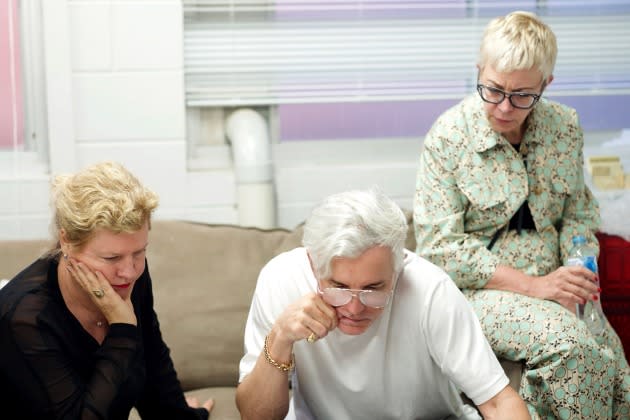Could ‘Elvis’ Cinematographer Mandy Walker Make History by Becoming the First Woman to Win Both ASC and Oscar Trophies?
- Oops!Something went wrong.Please try again later.
- Oops!Something went wrong.Please try again later.
- Oops!Something went wrong.Please try again later.

Is the Oscar cinematography category making progress when it comes to recognizing female DPs?
This year, Mandy Walker became only the third woman ever nominated for cinematography for her work on “Elvis.” Rachel Morrison (“Mudbound”) made history as the first female DP to land a nom and that was in 2018, while Ari Wegner was nominated last year for “The Power of the Dog.”
More from Variety
Austin Butler Drank Häagen-Dazs Ice Cream to Gain Weight for 'Elvis,' Was Inspired by Ryan Gosling
'Avatar 2' and 'Elvis' Lead Winners at Advanced Imaging Society's Lumiere Awards
Walker’s up against James Friend (“All Quiet on the Western Front”), Darius Khondji (“Bardo, False Chronicle of a Handful of Truths”), Roger Deakins (“Empire of Light”) and Florian Hoffmeister (“Tár”), in a very competitive race.
While the cinematographers’ branch has a notoriously poor track record in honoring diverse artists — no Black DP has ever won the category and only two have been nominated — Walker might have an edge.
Her work on “Elvis” earned her the Australian Academy of Cinema and Television Arts gong for cinematography — the first woman to take home this prize ever.
Walker is Luhrmann’s go-to cinematographer. Luhrmann recalls seeing Walker’s work on the 2001 drama “Lantana.” The director thought using “it was a great opportunity for me to explore a photographic collaborator who is different from anyone I’ve ever worked with,” he says. She shot his 2004 Chanel No. 5 commercial, starring Nicole Kidman and Rodrigo Santoro — itself a mini-masterpiece. “We were joined at the hip from that moment.”
From “Australia” to “Moulin Rouge,” Walker has been by his side, coming in early to deliver his vision.
For “Elvis,” she spent hours watching and examining old footage of Elvis Presley to faithfully reproduce certain shots and lighting changes as seen in Presley’s 1968 TV special — the follow spots and the backdrop colors were shot-for-shot from the original show. Walker says she “put our 65mm digital cameras inside the TV camera so that we had exactly the same angle, and then we had zooms that replicated the zooms that they had.”
The Alexa 65mm helped Walker achieve intimacy in the dramatic moments between Presley and his mother, or in scenes with his wife, Priscilla. Walker says, “It’s the best format … for intimacy because you can narrow the depth feel down to be very close to a character and not feel what’s going on behind. It’s about focusing the audience on them.”
As Elvis’ life spirals, Walker shifts the lighting drastically. “We hardly had any light on [Austin], and we wanted it darker to feel how closed in he was.”
Other highly contested races include costume design, in which all the nominees worked with tropes of a different era or in the case of Ruth E. Carter, built on previous designs. Carter, who won for “Black Panther,” is back with the sequel, “Black Panther: Wakanda Forever,” in which she not only had to up her game with Wakanda, but also create costumes for the newly introduced Talokan civilization. The Talokan people live underwater and their clothing and jewelry designs reflect their Mesoamerican culture.
Mary Zophres designed “Babylon,” with its 1920s setting, while Catherine Martin is doing triple duty on “Elvis” as producer, costume designer and production designer (for which she earned Oscar noms and recently won Art Directors Guild and BAFTA prizes for). Jenny Beavan mixed working-class clothes with 1950s Dior couture for “Mrs. Harris Goes to Paris,” while Shirley Kurata’s costume design reflected the wildly different multiverses — from schlubby looks to eye-popping splendor to sophisticated eveningwear – for “Everything Everywhere All at Once.”
Best of Variety
Sign up for Variety’s Newsletter. For the latest news, follow us on Facebook, Twitter, and Instagram.
